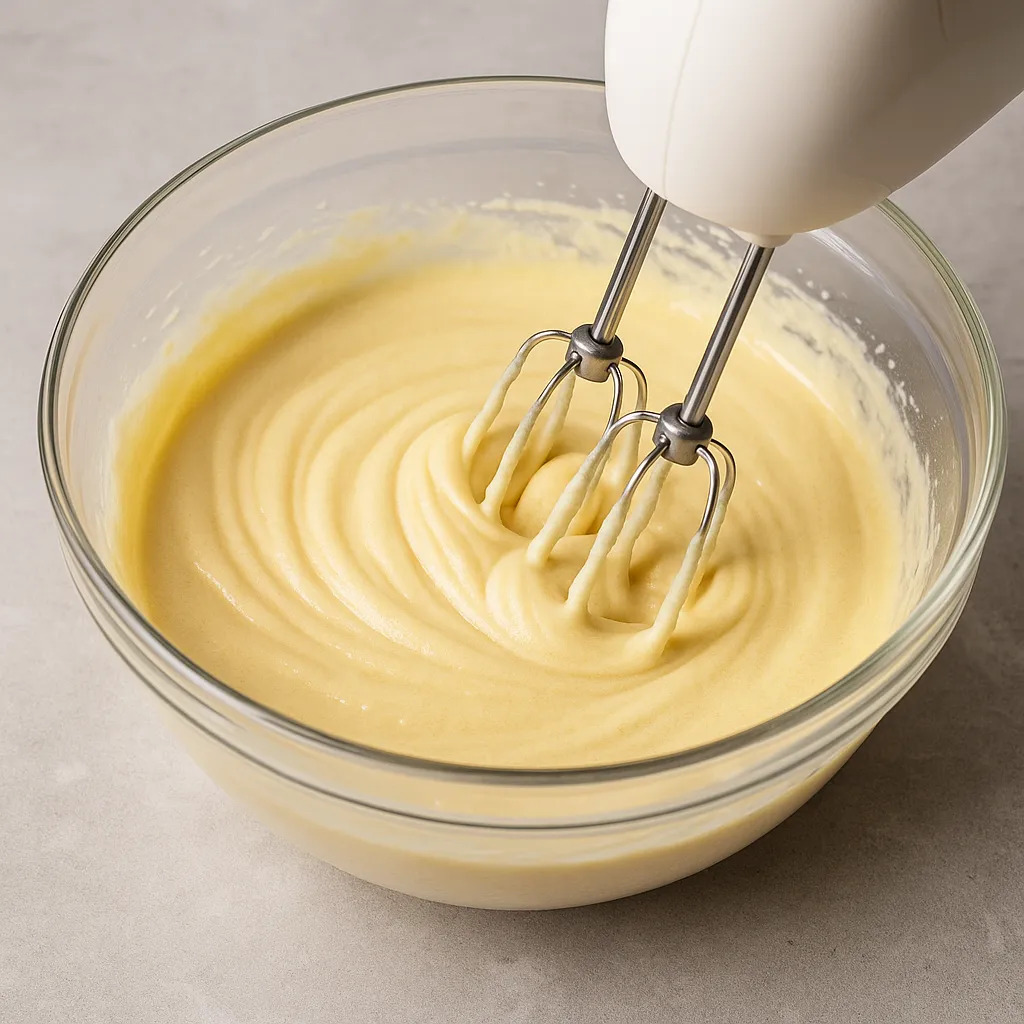Introduction
Beating cake batter might seem like a simple step, but it’s one of the most important stages in baking. The way you mix your ingredients affects the cake’s texture, rise, and overall quality. Overmixing can lead to a dense, tough crumb, while undermixing can result in uneven texture and poor structure. Learning how to beat cake batter just right will help you achieve consistently light, fluffy, and perfectly baked cakes.
Why Proper Mixing Matters
When you beat butter and sugar together, you incorporate air into the mixture, which helps the cake rise. Later, when you combine the dry and wet ingredients, you’re creating a delicate balance between gluten formation and air retention. Too much mixing at this stage develops excess gluten, making the cake chewy. Too little mixing leaves clumps of flour or uneven texture. Achieving the right mix also ensures even distribution of leavening agents, which gives the cake a uniform rise without sinking spots or large air tunnels. It’s this harmony between aeration and structure that produces a cake with a tender crumb, balanced moisture, and professional-level consistency.
Step-by-Step Guide to Beating Cake Batter
1. Cream Butter and Sugar Thoroughly
- Use room-temperature butter — soft enough to press a finger into but not melted.
- Beat butter and sugar together for about 2–4 minutes on medium speed until pale and fluffy. This process traps air, giving the cake volume.
2. Add Eggs Gradually
- Add eggs one at a time, beating well after each addition to emulsify and prevent curdling.
- Scrape down the sides of the bowl between additions.
3. Alternate Dry and Wet Ingredients
- Add dry ingredients in three parts, alternating with wet ingredients (milk, buttermilk, etc.) in two parts.
- Start and end with the dry ingredients for better structure.
4. Mix Only Until Combined
- Once the final addition of flour is in, switch to low speed or fold by hand.
- Stop as soon as no visible streaks of flour remain.
5. Scrape the Bowl Regularly
- Ingredients tend to stick to the sides and bottom. Scraping ensures even mixing and prevents pockets of unmixed batter.
Tools That Make a Difference
- Hand mixer or stand mixer for consistent creaming.
- Silicone spatula for folding and scraping.
- Mixing bowls with high sides to reduce splatter.
- Oven-ready timing: Have pans prepped before you finish mixing, so the batter goes straight into the oven.
Signs You’ve Beaten the Batter Just Right
- The batter is smooth and uniform.
- There are no lumps of flour or butter.
- It feels light and slightly airy when lifted with a spatula.
- It flows slowly off the spatula without being runny.
Practical Example: Vanilla Butter Cake Batter
For a classic vanilla butter cake, cream ½ cup (115g) butter and 1 cup (200g) sugar until pale and fluffy. Beat in 2 eggs, one at a time. Alternate adding 1 ½ cups (190g) flour (mixed with 1 ½ tsp baking powder) and ½ cup (120ml) milk, starting and ending with the flour. Fold in the last bit by hand to avoid overmixing. Bake as directed for a soft, tender crumb.
Frequently Asked Questions (FAQ)
Q1: What happens if I overmix the batter?
Overmixing develops too much gluten, resulting in a dense, chewy cake.
Q2: Can I mix cake batter by hand?
Yes, but it requires more time and energy to properly cream butter and sugar. Folding dry ingredients by hand is actually preferred to prevent overmixing.
Q3: Is it okay if my batter is slightly lumpy?
Yes, small lumps are fine and will bake out. Large lumps of dry flour should be avoided.
Q4: Can I use cold eggs and milk?
It’s better to use room-temperature eggs and milk for better emulsification and a smoother batter.
Q5: What speed should I use on my mixer?
Medium speed for creaming butter and sugar, low speed for incorporating flour to minimize gluten formation.
Q6: How long should I beat the batter after adding flour?
No more than 30–60 seconds, just until everything is combined.
Q7: Can I prepare batter in advance?
No. Once the leavening agents are activated, the batter should be baked immediately for best results.
Q8: My batter looks curdled after adding eggs. Is it ruined?
Not necessarily — it often smooths out once you add the dry ingredients.
Conclusion
Beating cake batter just right is about finding the perfect balance between incorporating air and avoiding excess gluten. By creaming butter and sugar properly, adding eggs slowly, alternating wet and dry ingredients, and mixing only until combined, you’ll get consistent, bakery-quality cakes every time. Proper mixing also means your cakes will bake evenly, hold their shape, and have a delicate crumb that melts in your mouth. Master this step, and you’ll elevate the texture, appearance, and flavor of all your baked creations — from simple sponges to multi-layered showstoppers.

